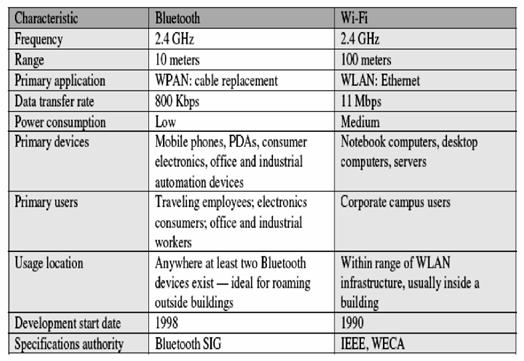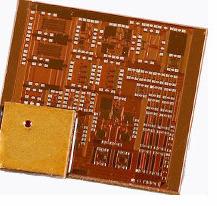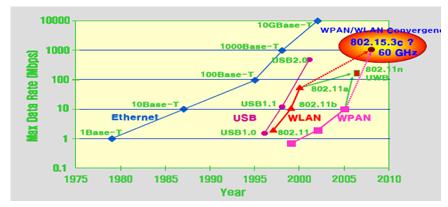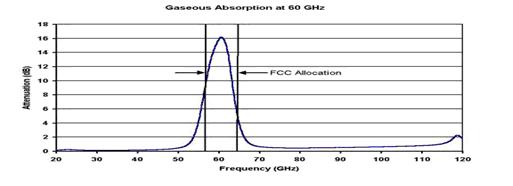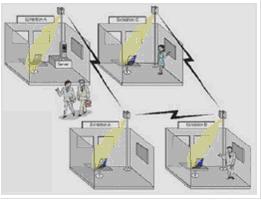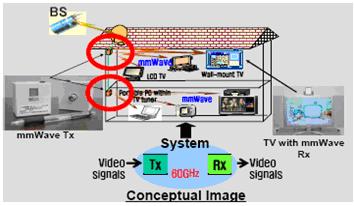Technical Paper Title: Gi-Fi(New Era of Eireless Technology)
Authors: S.DHEERAJ & S.GOPICHAND, 2nd BTech, EEE
College: Prakasam Engineering College, Kandukur
ABSTRACT
Gi-Fi will helps to push wireless communications to faster drive. For many years cables ruled the world. Optical fibers played a dominant role for its higher bit rates and faster transmission. But the installation of cables caused a greater difficulty and thus led to wireless access. The foremost of this is Bluetooth which can cover 9-10mts. Wi-Fi followed it having coverage area of 91mts. No doubt, introduction of Wi-Fi wireless networks has proved a revolutionary solution to “last mile” problem.However, the standard’s original limitations for data exchange rate and range, number of channels, high cost of the infrastructure have not yet made it possible for Wi-Fi to become a total threat to cellular networks on the one hand, and hard-wire networks, on the other. But the mans continuous quest for even better technology despite the substantial advantages of present technologies led to the introduction of new, more up-to-date standards for data exchange rate i.e., Gi-Fi.
Gi-Fi or Gigabit Wireless is the world’s first transceiver integrated on a single chip that operates at 60GHz on the CMOS process. It will allow wireless transfer of audio and video data up to 5 gigabits per second, ten times the current maximum wireless transfer rate,at one-tenth of the cost,usually within a range of 10 meters.It utilizes a 5mm square chip and a 1mm wide antenna burning less than 2 watts of power to transmit data wirelessly over short distances, much like Bluetooth.
The development will enable the truly wireless office and home of the future. As the integrated transceiver is extremely small, it can be embedded into devices. The breakthrough will mean the networking of office and home equipment without wires will finally become a reality.
In this paper we present a low cost, low power and high broadband chip, which will be vital in enabling the digital economy of the future.
INTRODUCTION:
Wi-Fi (ieee-802.11b) and WiMax (ieee-802.16e) have captured our attention.As there is no recent developments which transfer data at faster rate..as video information transfer taking lot of time.
This leads to introduction of Gi-Fi technology .it offers some advantages over Wi-Fi, a similar wireless technology ,in that it offers faster information rate in Gbps ,less power consumption and low cost for short range transmissions.
Gi-Fi which is developed on a integrated wireless trnsceiver chip.In which a small anteena used and both transmitter- receiver integrated on a single chip.which is fabricated using the complementary metal oxide semiconductor (CMOS)process. Because of Gi-Fi transfer of large videos, files will be with in seconds.
WHY Gi-Fi ?
The reason for pushing into Gi-Fi technology is because of slow rate, high power consumption, low range of frequency operations of earlier technologies i.e. Bluetooth and Wi-Fi. see the comparisons and features of those two technologies.
Bluetooth Verses Wi-Fi
DISADVANTAGES OF BLUETOOTH AND Wi-Fi:
From above table we can conclude that the bit rates of Bluetooth is 800Kbps and Wi-Fi has 11Mbps.Both are having power consumptions 5mw and 10mw .And lower frquency of operation 2.4GHz.For transferring large amount of videos ,audios, data files take hours of time. So to have higher data transfer rate at lower power consumption we move onto Gi-Fi technology
WHAT IS Gi-Fi?
Gi-Fi or gigabit wireless is the world’s first transceiver integrated on a single chip that operates at 60GHz on the CMOS .proces. It will allow wireless transfer of audio and video data at up to 5 gigabits per second, ten times the current maximum wireless transfer rate, at one-tenth the cost. NICTA researchers have chosen to develop this technology in the 57-64GHz unlicensed frequency band as the millimetre-wave range of the spectrum makes possible high component on-chip integration as well as allowing for the integration of very small high gain arrays. The available 7GHz of spectrum results in very high data rates, up to 5 gigabits per second to users within an indoor environment, usually within a range of 10 metres.It satisfies the standards of IEEE 802.15.3C
Gigabit wireless: The Gi-Fi integrated wireless transceiver chip developed at the National ICT Research Centre, Australia. —
FUNDAMENTAL TECHNOLOGIES IN 802.15.3C:
This mmWave WPAN will operate in the new and clear band including 57-64 GHz unlicensed band defined by FCC 47 CFR 15.255. The millimeter-wave WPAN will allow high coexistence (close physical spacing) with all other microwave systems in the 802.15 family of WPANs.
working IN gi-fi:
Here we will use time divison duplex for both transmission and receiving.wewill data files are up convertedfrom IF range to RF60Ghz range by using 2 mixers.we will fed this to an power amplifier,which feeds millimeter wave anteena.
The incoming RF signal is first down converted to an IF signal centered at 5 GHz .and then to normal data ranges,here we will use hetrodyne construnction for this process to avoid leakages due to direct conversion.due to availability of 7Ghz spectrum the total data will be will be trasfered with in seconds.
WHY 60 GHZ..?
Here we will use millimeter wave antenna which will operate at 60Ghz frequency which is unlined band .Because of this band we are achieveing high data rates energy propagation in the 60 GHz band has unique characteristics that make possible many other benefits such as excellent immunity to co-channel interference, high security, and frequency re-use.
Point-to-point wireless systems operating at 60 GHz have been used for many years for satellite-to-satellite communications. This is because of high oxygen absorption at 60 GHz (10-15 dB/Km). This absorption attenuates
60 GHz signals over distance, so that signals cannot travel far beyond their intended recipient. For this reason, 60GHz is an excellent choice for covert communications
Oxygen Attenuation vs. Frequency
ULTRA WIDE BAND FREQUENCY USAGE:
UWB, a technology with high bit rate, high security and faster data transmission. It is a zero carrier technique with low coverage area. So we have low power consumption. These features are Ultra-Wideband (UWB) is a technology for transmitting information spread over a large bandwidth (>500 MHz) that should, be able to share spectrum with other users. Regulatory settings of FCC are intended to provide an efficient use of scarce radio bandwidth while enabling both high data rate personal-area network (PAN) wireless connectivity and longer-range, low data rate applications as well as radar and imaging systems
FEATURES OF Gi-Fi:
The Gi-Fi standard has been developed with many objectives in mind. These are summarized below:
1.High speed of data transfer:
The main invention of Gi-Fi to provide higher bit rate .As the name it self indicates data transfer rate is in Giga bits per second. Speed of Gi-Fi is 5 gbps. which is 10 times the present data transfer. Because of wider availability of continuous 7 Ghz spectrum results in high data rates.
2. Low Power Consumption:
As the large amount of information transfer it utilises mili watts of power only. It consumes only 2 mwatt power for data transfer of gigabits of information. where as in present technologies it takes 10 mwatt power. which is very high.
3. High Security:
Point-to-point wireless systems operating at 60 GHz have been used for many years by the intelligence community for high security communications and by the military for satellite-to satellite communications. The combined effects of O2 absorption and narrow beam spread result in high security and low interference
4. Cost-effective:
Gi-Fi is based on an open, international standard. Mass adoption of the standard, and the use of low-cost, mass-produced chipsets, will drive costs down dramatically, and the resultant integrated wireless transreceiver chip which transfers data at high speed low power at low price $10 only. which is very less As compare to present systems .As go on development the price will be decreased.
Other features :
High level of frequency re-use enabled – communication needs of multiple customers within a small geographic region can be satisfied
It is also highly portable-we can construct where ever we want.
It deploys line of sight operation having only shorter coverage area, it has more flexible architecture.
APPLICATIONS:
There are many usage cenarios that can be addressed by Gi-Fi. The following are some mobility usage applications of Gi-Fi.
Ø In wireless pan networks:
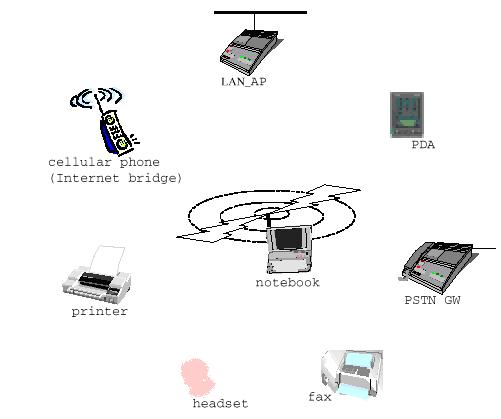
Ø Inter-vehicle communication system :
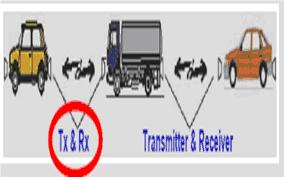
Ø Huge data file transmission:
It will transfer gigabits of information with in seconds
Ø Broadcasting video signal transmission system in sports stadium :
- Ad-hoc information distribution with Point-to-Point network extension:
Easy and immediate construction of temporal broadband network such as in exhibition-site for…Advertisement information distribution or Contents downloading service
Ø mm-Wave video-signals transmission system
- Media access control(MAC) and imaging and others:
IN FUTURE:
As the range is limited to shorter distances only we can expect the broad band with same speed and low power consumption.
CONCLUSION:
Within five years, we expect Gi-Fi to be the dominant technology for wireless networking. By that time it will be fully mobile, as well as providing low-cost, high broadband access, with very high speed large files swapped with in seconds which will develop wire less home and office of future.
If the success of Wi-Fi and the imminent wide usage of WiMAX is any indication, Gi-Fi potentially can bring wireless broadband to the enterprise in an entirely new way.

